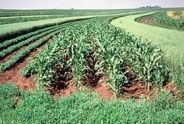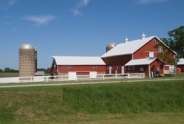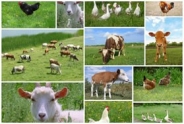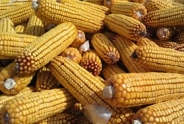Early Season Pests
Katelyn Miller, Field Crops and Forage Specialist
Southwest New York Dairy, Livestock and Field Crops Program
CORN PESTS:
Black Cutworm
There are several species of cutworm found in NYS, but black cutworm (BCW) is the most common. The adults migrate from southern overwintering sites on spring storms. They lay eggs on cover crops, grassy weeds, and winter annuals like chickweed and purple deadnettle. Although several generations can occur, the first generation causes economic loss in the state.
BCW larvae are nocturnal, feeding at night on young corn plants. Their damage is characterized by missing, cut, or wilted plants. If you notice this damage, try digging near the affected plants to look for the larvae. The key to managing BCW is to scout for damage. Fields that favor outbreaks include late planting, weed infestations, low, wet areas in the field, and those that were previously sod. Typically, the threshold for cutworm damage is 5% feeding to warrant an insecticide application, but this can vary with corn development.
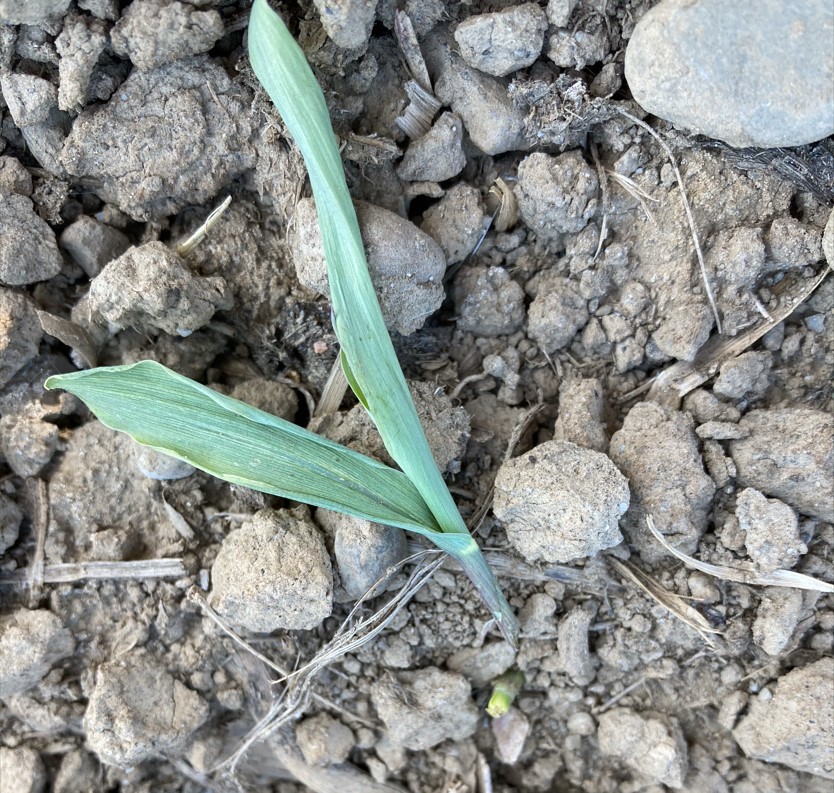
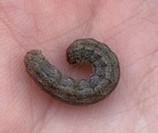
Birds
Birds can be a pest to young plants because they pull the corn out of the ground. They do this because they are looking for the seed at the base of the root. Indicators that birds have been feeding in the field is evidence of feces, rows of plants pulled from the ground like shown in the picture below, and clipped plants.

SOYBEAN PESTS:
Soybean Aphids
Soybean aphids are small yellow-green insects that feed on soybean plants throughout the season. They begin feeding in mid-June, which makes scouting important. If you are experiencing stunted plants, misshapen leaves, or see ants and lady beetles, these are signs that aphids are present in your field. Aphids are usually found on the underside of the plant and on uncurling leaves, so pull plants and evaluate these areas. The threshold for aphids is 250/plant. Avoid tossing in an "insurance" application of insecticides because it will kill many beneficial insects that keep other insect populations such as spider mites, in check.

Slugs
Slug damage can be present on both corn and soybeans. Typically, slugs will feed on plants in fields with high residue such as weedy fields, no-till, and fields that were sod the previous year. Slug damage is often more present during cool, moist springs. There are no economical treatments for slugs, so preventing their presence through factors like residue management can help to reduce damage.

***Photo from M. Stanyard
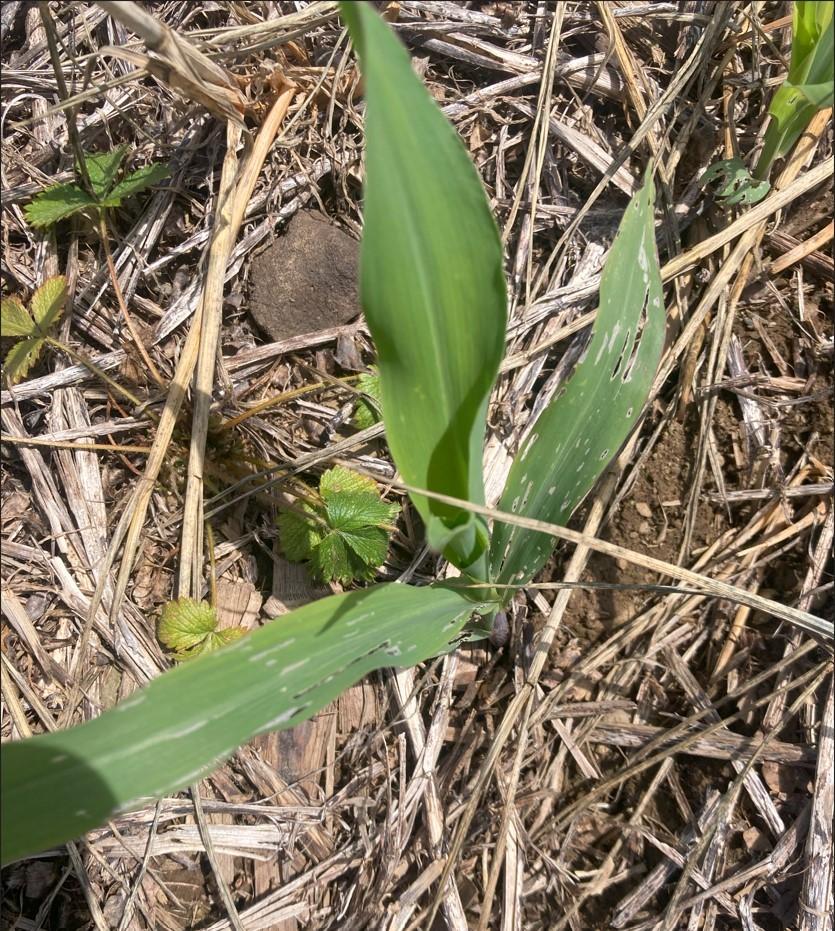
FORAGE PESTS:
Potato Leafhopper
Potato leafhopper (PLH) is a green insect that is 1/8" long. They feed on newly established fields and regrowth, making them a serious economic pest in NY. The pest arrives in mid-May to late June on spring storms and feeds on alfalfa by removing sap from the plants. This feeding reduces the plants' ability to photosynthesize but also injects a toxin into the plant. This injection of toxin is how the characteristic "hopper burn" develops. Scout for PLH with a sweep net throughout the summer, making a few sets of 10 sweeps throughout the field. Compare your findings to the threshold chart below and make an insecticide application if warranted. If you are experiencing consistent PLH feeding damage on your farm, consider planting a resistant variety.
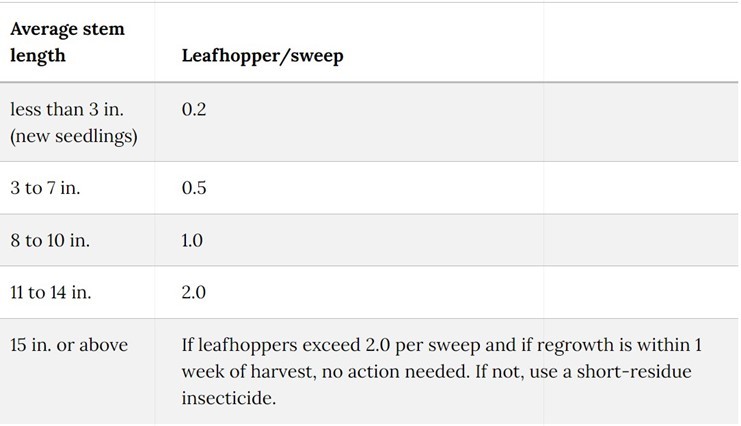

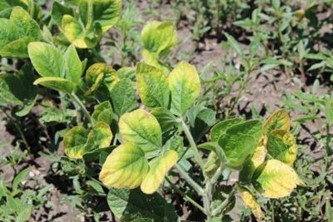
*** photo on top from University of Wisconsin, photo on bottom from Iowa State University
Alfalfa Weevil
 Alfalfa weevil overwinters in NY, and in mid-May the adult's lay eggs on the lower stem of the plant. Their development is completed by late May to mid-June, making second cutting regrowth vulnerable to damage. Typically, alfalfa weevil feeds on established stands instead of new seedings, so focus scouting efforts on those fields. While walking through a field, pick 50 stems at random. Look for their feeding patterns, characteristically known as a "shot hole" in the buds and upper leaves. If you notice that 50% of plants show signs of feeding, an insecticide application may be warranted.
Alfalfa weevil overwinters in NY, and in mid-May the adult's lay eggs on the lower stem of the plant. Their development is completed by late May to mid-June, making second cutting regrowth vulnerable to damage. Typically, alfalfa weevil feeds on established stands instead of new seedings, so focus scouting efforts on those fields. While walking through a field, pick 50 stems at random. Look for their feeding patterns, characteristically known as a "shot hole" in the buds and upper leaves. If you notice that 50% of plants show signs of feeding, an insecticide application may be warranted.
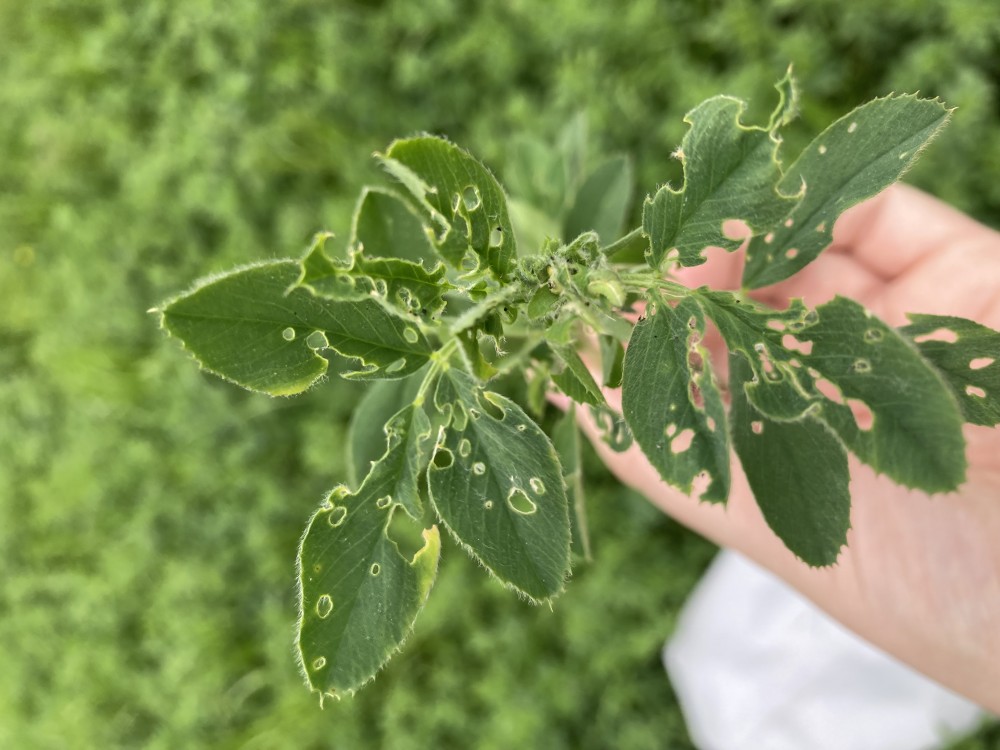
Common Armyworm
A new addition from last year is Common Armyworm (CAW). This pest feeds on winter grains, grassy fields, and even corn. Our pheromone trapping network has caught significant flights of this pest over the past few weeks, making your fields high risk as larvae are now large enough to cause noticeable damage. Plants will develop a ragged appearance and severe feeding pressure can decimate whole fields. When scouting, look in the residue at the base of the plant to find the larvae.
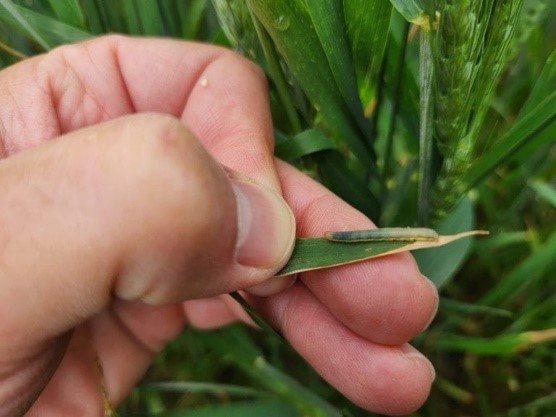
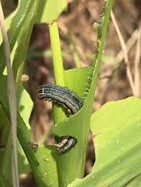
Photo on top from M. Stanyard, photo on bottom from UMN Extension
If you're interested in more information about thresholds, want more information about scouting for these pests, or you have concerns about these pests in your fields, reach out to Katelyn Miller at 716-640-2047 or km753@cornell.edu.
Upcoming Events
Memoir Reading: Barn Gothic
December 4, 2025
Bath, NY
Barn Gothic is an elegy for family farmers and an intimate portrait of three generations laboring to be fathers and sons while their livelihood falls apart. Beautifully told with a farmer's restraint and a poet's grace, it is a story of personal loss amid corporate corruption and of finding a way forward when everything you know disappears.
NY Small Farms Summit 2025: Stronger Together
December 5, 2025
Alfred, NY
We hope you will join us on December 5th for the 2025 New York Small Farms Summit! This is an opportunity to meet other farmers and ag supporters, learn about research and education projects, and set priorities for future efforts to grow small farm success.
At the Allegany County site, we will focus on giving trees a chance and how trees build resiliency on small farms. Whether attracted to fruit, nuts, vegetables, fodder or shade, trees can be an integral part of a successful farming system. Join us as we explore the opportunities for resiliency that come from adding tree crops or managing wooded areas of your farm for agroforestry or silvopasture systems.
Crops, Cows & Critters - Southwest New York Dairy, Livestock & Field Crops Newsletter Sponsorship
December 19, 2025
Our two forms of publications feature research-based and timely information from our four specialists, listed to the right, along with local event notifications and Cornell University outreach. This information is provided to participants who range from dairy, livestock, and field crops producers to agricultural suppliers and consultants.
Weekly Email Update: Shared with 625+ households who have signed up with our program.
Monthly Paper Mailer: To reach our stakeholders and farmers who lack internet access, we send out a monthly mailer where your company's logo and contact information would be featured with a mailing list of 330+ households.
If you sponsor our weekly and monthly publications you reach approximately 955 households.
Visit our website to view our newsletters!
Announcements
No announcements at this time.

